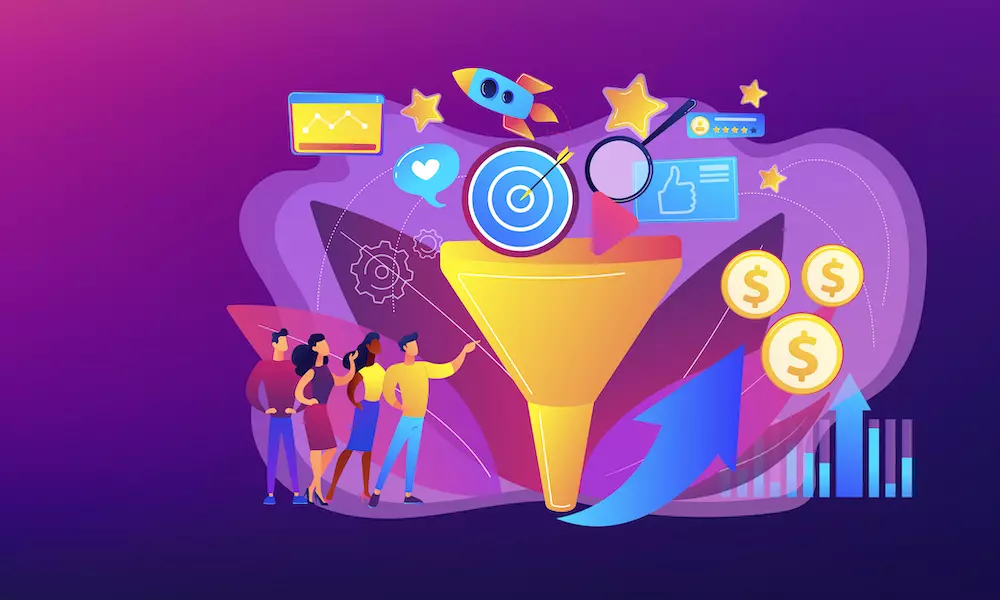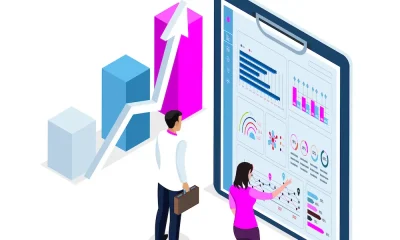Marketing
The New Marketing Funnel: Tech That’s Changing The Marketing Process

The marketing funnel is not as straightforward as it used to be. Today, it’s evolved with technological advancement.
There is now predictive software, AR, and automation, just a few developments that have created a better way for businesses to connect with their audience and turn them into paying customers.
So, whether you are a savant in the digital marketing field or testing the waters, you need to get yourself acquainted with the technology driving this new and exciting realm of marketing funnel.
First, let’s consider where the marketing funnel we’re used to and then how it’s changed for the better.
How Marketing Funnel Has Evolved
The traditional marketing funnel consisted of a four-stage model, guiding customers from awareness to consideration, evaluation, and purchase.
Ultimately, the goal of this funnel was to increase leads and conversion rates, which it did exceptionally well for some time.
However, with digital marketing ruling the day, technology has created a marketing funnel that has now morphed into something more diverse, accurate, and efficient.
The Tech Changing the Process
Web 3 technology changing the marketing funnel includes AI, AR, automation, machine learning, and more. Let’s take a look at them.
Predictive Software
Predictive software uses data to predict future trends, customers, or possibilities. This software gathers data from the company’s present customer roster to identify online users who may be potential customers. Various platforms offer this service, including Infer, Minitigo, and Leadspace.
While this software is not as widespread as others, it is slowly growing. It has proven to be a valuable tool in determining leads and accounts that can quickly move along the marketing funnel.
Using predictive analytics, you can ensure that you are marketing to the right target and that your odds of converting online users are optimistically high.
Augmented Reality (AR)
Customers are always looking for ways to make the shopping experience easier by testing items before purchasing them. Fortunately, augmented reality (AR) offers them just that.
AR is a fast-growing marketing strategy that allows users to take shopping to the next level. Using mobile devices, consumers can digitally visualize products before purchasing them. They can use AR to try on clothes, wear makeup, or even set up products in their living spaces without physical interaction.
Now, they do not need to question their decision when looking to purchase an item. This simplified experience leads to quicker decision-making and increases the odds of a customer patronizing your brand.
Marketing Automation Software
Marketing automation has become a game changer for every brand, regardless of industry. This innovation allows them to reduce time while maintaining or increasing revenue.
A brand does not need to delegate team members to gather and share data; this can all be done automatically with software.
Using said data, companies have vital insights and can use them to market at the appropriate time. This allows businesses to create personalized strategies for their target audience based on collected data.
A perfect example is a consumer receiving an email containing specific products based on their browsing history. It may seem surprising to many, but it’s simply the power of data-driven technology.
Furthermore, automation leads to fewer errors caused by the human component and less money spent hiring individuals to get the job done. With automation, the benefits and possibilities are endless for all parties involved, from the business to consumers.
AI-backed Communication
Customer satisfaction is everything when it comes to digital marketing. As a business owner, your audience and customers should have easy access to you, be it for complaints or inquiries. Not only does this affirm trust, but it also increases your odds of retention.
Thanks to chatbots and other AI-driven forms of communication, you no longer need to keep clients waiting for long periods. These automated tools give instant support to consumers and enhance user experience.
AI-driven tools on your website can help guide consumers through the purchase journey. From responding to questions to recommending services and products suited to their needs, chatbots can help streamline the buying experience.
This system allows your consumer’s issues and inquiries to be resolved instantly. Additionally, it reduces the workload for your staff members, who only need to step in when users are not satisfied with the automated responses.
Social Media Collaboration
Social media has been a driving force in digital marketing. The diversity of social media platforms allows businesses to widen their reach and get across to a vast range of individuals.
Influencer collaboration, aka influencer marketing, is one of the greatest assets for a company looking to market its product or service on social media.
Influencer collaboration entails working with an influencer with a massive and loyal following to promote your business. You can use this platform to reach a new audience and gain authority in your industry.
This methodology comes with the bonus of user-generated content (UGC) from satisfied consumers who take others through their experience dealing with your brand.
It is important to note that user-generated content helps to solidify your credibility on and off social media. In fact, according to a study by Stackla in 2019, 79% of people agree that user-generated content heavily affects their buying decisions.
Conclusion
The new marketing funnel has opened up a lot of possibilities when it comes to businesses connecting with their consumers.
With these advanced technologies, you can create a unique experience for your customers, interact with them when necessary, and greatly influence their decisions.
As a marketer, whether seasoned or not, your ability to adapt to the ever-changing tools required to become a marketing success is essential. As the future of marketing becomes more dynamic, it is up to you to embrace these changes.
Remember, the buying journey is not linear anymore; your approach should change based on consumer preferences. Ultimately, the marketing funnel is no longer up to you; it is now a customer-centric endeavor.
At the end of the day, the goals of these funnels have not changed. They are needed for inquiries to turn into sales. The only difference is that the approach has become more convoluted and challenging.
To achieve accuracy and efficiency, marketing funnels have become more complex to match the buyer’s journey. This means that you may find consumers at any stage in their purchase journey, and it is your job to guide them toward the end goal.






